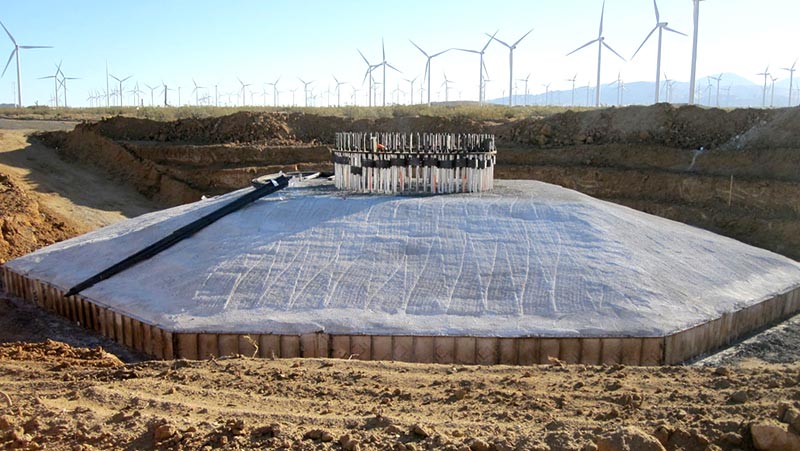Wind Turbine Soil Improvement Runs Deep — or Shallow


Photo source: epaw.org
Wind farms are typically located in remote, open areas where they can generate the most power, which translates to long hauls for equipment and materials. Poor soil conditions can create high costs and delays even for shallow excavations.
Aaron Gaul, P.E., Principal Engineer with Ground Improvement Engineering in Kansas City, Mo., discusses how Geopier® ground improvement systems can support turbine sites with less than ideal soil conditions or climate issues.
In our experience on average, about one in six turbine sites on a large wind farm can have some type of soft or poor soil conditions. However, sometimes we’re brought in for two out of a hundred sites or for 30 out of 50 sites. It just depends on the location.
Also, the timing of ground improvement can vary. Sometimes the developer is already aware of poor soil conditions. Most of the time they are discovered during geotechnical site analysis and design phases. However, the general contractor may also discover during excavation that a borderline location is not as good as initially thought. Alternate solutions are often considered when the required undercut depth is likely to increase time and materials costs.
Generally, if there is a thicker compressible layer below the planned foundation, then the project will require deeper and more extensive ground improvement to account for adequate settlement control and to address any future foundation performance risks.
The cut-off for considering alternate soil improvement solutions is generally around 4-5 feet of excavation below the bottom of the mat. This is because excavations deeper than 4-5 feet below the mat require much more lateral excavation around the diameter of the mat, which means that more infill must be hauled to the site. Our solutions typically support 5 feet down to 30 feet below the bottom of the mat.
In some cases, however, time and climate conditions are involved. We can also provide a cost-effective solution at sites that would normally require shallower undercuts of 3 feet or less. It may only take one to two days at a given turbine site to improve the ground with a Geopier® solution, compared to a shallow undercut for a remote site with expensive haul distances to bring in good gravel. Also if it’s spring and raining, for example, the timing and installation of our solutions are typically less impacted by climate conditions.
In fact, we can install a Geopier system before excavation to the foundation bearing depth. We can be sequenced into the project and be in and out before the earth movers arrive at select turbine sites. Depending on the installation method, teams of three or four people, including a quality control person, are on hand to complete the work.
Ground Improvement Engineering has provided soil improvement solutions for wind farms over the past 20 years, and the technology has continued to improve the cost effectiveness, scheduling and longevity of turbine foundations. For more information, view this post about how ground improvement can support turbine sites with high water tables or seasonally wet construction conditions.
